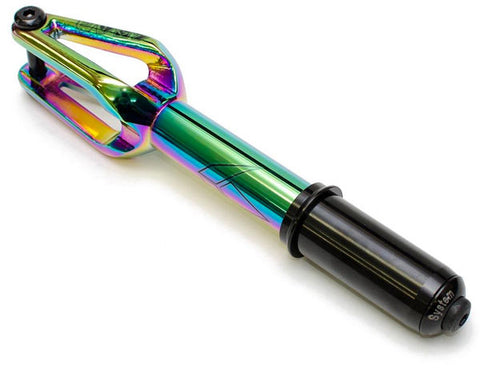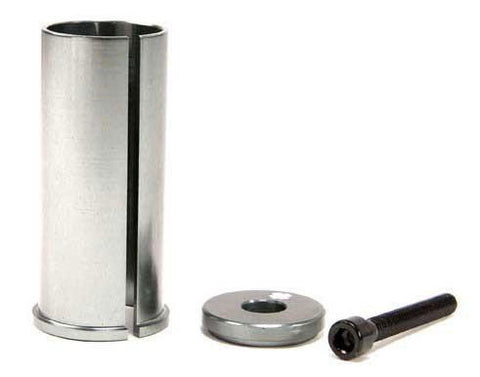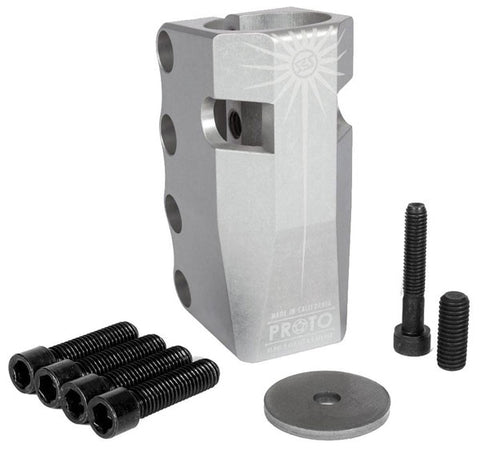423 Guelph Line, Burlington ON, L7R3L7
423 Guelph Line
Burlington ON
L7R3L7
For riders just getting into scootering, one of the most common questions is "what is the difference between SCS, HIC, and IHC compression?" Each of these compression systems are designed to keep your scooter's steering working smoothly.

Internal Hidden Compression is the most common system found today. It was pioneered by Envy scooters, and many other manufacturers have followed suit. You will find it on most complete scooters, and many top riders choose IHC. It’s benefits include low weight, ease of adjustability, and broad compatibility. A small shim sits under your handlebars, and it is adjusted with a bolt on top. If your scooter has IHC, here’s some things you may want to know:

Hidden Internal Compression is a little less common today. It uses a larger oversized steel handlebar, so it is at a slight weight disadvantage. It is also very easy to adjust, and it very similar to IHC (except for its size). If your scooter has HIC, here’s some things you may want to know:

Standard Compression System integrates the compression and clamp into one piece. It is popular with expert street riders whose scooters take the most brutal impacts. The bars slide into the SCS compression instead of sliding over the fork. Because of this, the bar must not have a slit, which offers a slight strength advantage. Under the handlebars is a bolt that allows the compression to be adjusted. If your scooter has SCS, here’s some things you may want to know:
There are a few other standards out there, such as threaded compression, ICS (Inverted Compression System), and Pytel Compression, but these are much less common. We understand that’s a lot of acronyms and standards to wrap your head around. If you have any questions about compression, or what parts you might need, don’t hesitate to contact us.